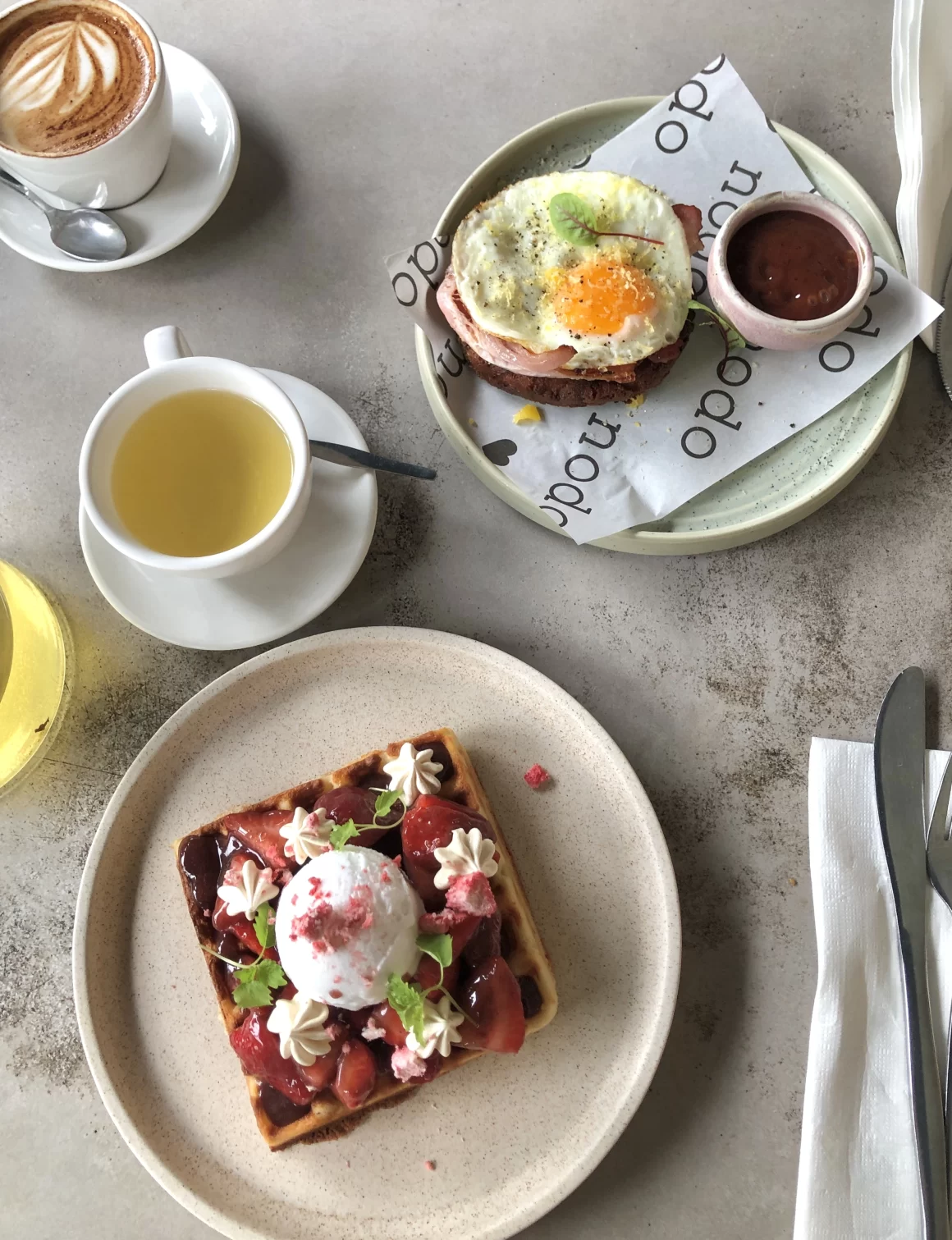
If you have food intolerances (gluten, lactose, FODMAPs, food chemicals, etc.), you probably know a thing or two on having fear and anxiety around food. I don’t just say this from professional experience, but personal experience too. Having had food intolerances for most of my life, I’ve experienced a lot of fear around foods, worried that anything I ate was going to make me sick. In fact, it was one of the reasons I became a Dietitian.
However, after two university degrees and a lot of experimentation, I no longer experience fear and anxiety around food. Here’s how you can achieve this too, without the years of study!
Identifying Triggers
Firstly, you need to identify what you’re intolerant to. This can be a long journey, filled with plenty of trial and error, but it is essential. When you don’t know your individual triggers, you end up becoming fearful around food and unnecessarily avoiding food groups.
The thing is, intolerances can be complex and difficult to pinpoint. Not only can different intolerances have the same symptoms, but many foods in our diet can contain several potential triggers. And then some triggers can bring on symptoms quickly, whilst some don’t hit until hours later. It can be so easy to pin our symptoms on the wrong culprits and end up with a long list of foods we avoid.
So how do we identify our individual triggers? The only science-backed method of identifying intolerances is through a thorough nutrition assessment with a Dietitian and an elimination diet/challenge. It’s important to note that food intolerance testing kits are not backed by science. In fact, they can often do more harm than good. You can find more information about this over on the ASCIA website. Before becoming a dietitian, I tried all the different types of testing. Not only was it expensive, but it misled me into removing foods from my diet unnecessarily.
Once you’ve gone through food challenges with a Dietitian and identified your triggers, you’re finally free to eat all other foods without fear!
Note: if you believe you’re intolerant to gluten, I encourage you not to remove gluten from your diet (unless experiencing life-threatening symptoms) until you see your GP and book in for a Coeliac blood test screening. If you do remove gluten prior to the blood test your results will be inconclusive. Secondly, if you’re experiencing digestive symptoms and believe you may have IBS, see your GP to rule out IBD and diagnose IBS. Dietitian’s can’t diagnose IBS, only GP’s can.
Having an Effective Management Plan
Now that you’ve identified your trigger/s (food intolerance/s) and safely included all other foods back into your diet, it’s time for an effective management plan.
This is where you familiarise yourself with living without your individual trigger. It’s also where you get to know your trigger better. You do this by experimenting with doses and your ‘dose threshold’. What is that you ask? Well, unlike allergies (or conditions like Coeliac Disease), you can typically tolerate a certain amount of your trigger food/s before symptoms arise. How much you tolerate will be your dose threshold. However, this threshold may also fluctuate with things like stress, hormones and illness. For example, you may find your threshold is lower on a week where you’re unwell.
Understanding doses and ‘dose thresholds’ can make a huge difference, because it means that your trigger food is no longer off limits, it’s just consumed in a more controlled way. The more you know about your trigger foods, the less fear and anxiety you experience.
Again, I recommend doing this with a Dietitian!
Experimenting with Foods, Products & Recipes
Once you have your plan in place, it’s time to have some fun in the kitchen. If your trigger food is commonly found in your diet, start looking at what you can replace it with or start discovering new staple recipes.
Can’t have lactose? Start trying lactose-free dairy varieties. If you react to amines, start incorporating low/moderate amine vegetables into your lunch and dinner. If you react to oligosaccharides (one of the FODMAPs), switch from using garlic cloves to a garlic-infused olive oil. When you start experimenting, your food world will start to open right back up!
When I first had to remove gluten, I felt completely overwhelmed. After all, all my favourite foods are loaded with gluten. However, the more I experimented and learnt to cook without it, the less overwhelming it became. Just keep at it and in time it will feel normal.

(southbank, QLD)

Eating Out
Now that you’re feeling more confident with your food intolerance/s and how to manage it at home, let’s discuss eating out. Eating out, particularly at first, can be quite overwhelming. However, there are several things you can do to make eating out easier.
Firstly, in the lead up to eating out, make sure to not eat your trigger food/s. This way you can be more lenient when you’re out. Remember, it’s a dose-dependent relationship, so you need to make sure you’re staying under your dose to avoid symptoms.
Secondly, do some research ahead of time and look up what cafes and restaurants cater to your dietary requirements. Keep a record on your notes app of all the cafes/restaurants for future reference.
Thirdly, always come prepared by having some snacks in your bag or car. That way if there isn’t any suitable options, you have something to give you a bit of energy.
And lastly, if you are going somewhere that doesn’t cater to your requirements, eat a meal beforehand.
Over time, your anxiousness will subside and you will feel more confident about managing your food intolerances when you’re out and about!
Managing Socialising
Managing social events with food intolerances can sometimes be tricky. People don’t often understand the anxiety you experience around food (particularly when you don’t know how it’s been prepared or what the ingredients are), or the severity of the symptoms you may face. You may even be tempted to eat something you shouldn’t in order to blend in or to not seem rude. But again, there are tips to help make socialising much easier.
Some things to help include:
- Communicating your intolerances/sensitivities and symptoms to those closest to you. Those that care about you will be happy to work around this. For example, choosing a cafe with more options for you to eat.
- Don’t eat your trigger food/s in the lead up to the event. This way you can be more lenient when you’re at the event.
- If you have an event to go to, you can ring ahead to see what dietary requirements will be catered for.
- If you know there won’t be options available, have a meal before you go and pack a snack with you.
- If you’re having a BBQ or a dinner party with friends/family, offer to bring some safe food options with you.
Communication is always the best way to reduce anxiety around food intolerances when it comes to a group setting. In my experience, people are often very kind and happy to cater to dietary requirements, or work with you so you’ll have options to eat.
I hope these tips help to show you that there are plenty of tools that you can use to help reduce anxiety around food intolerances. With time, you can become confident in managing your intolerances!
If you’d like a Dietitian to help you through this process, I’m available for online consultations, just fill in the contact form here.
Talk soon,
Chanté x

